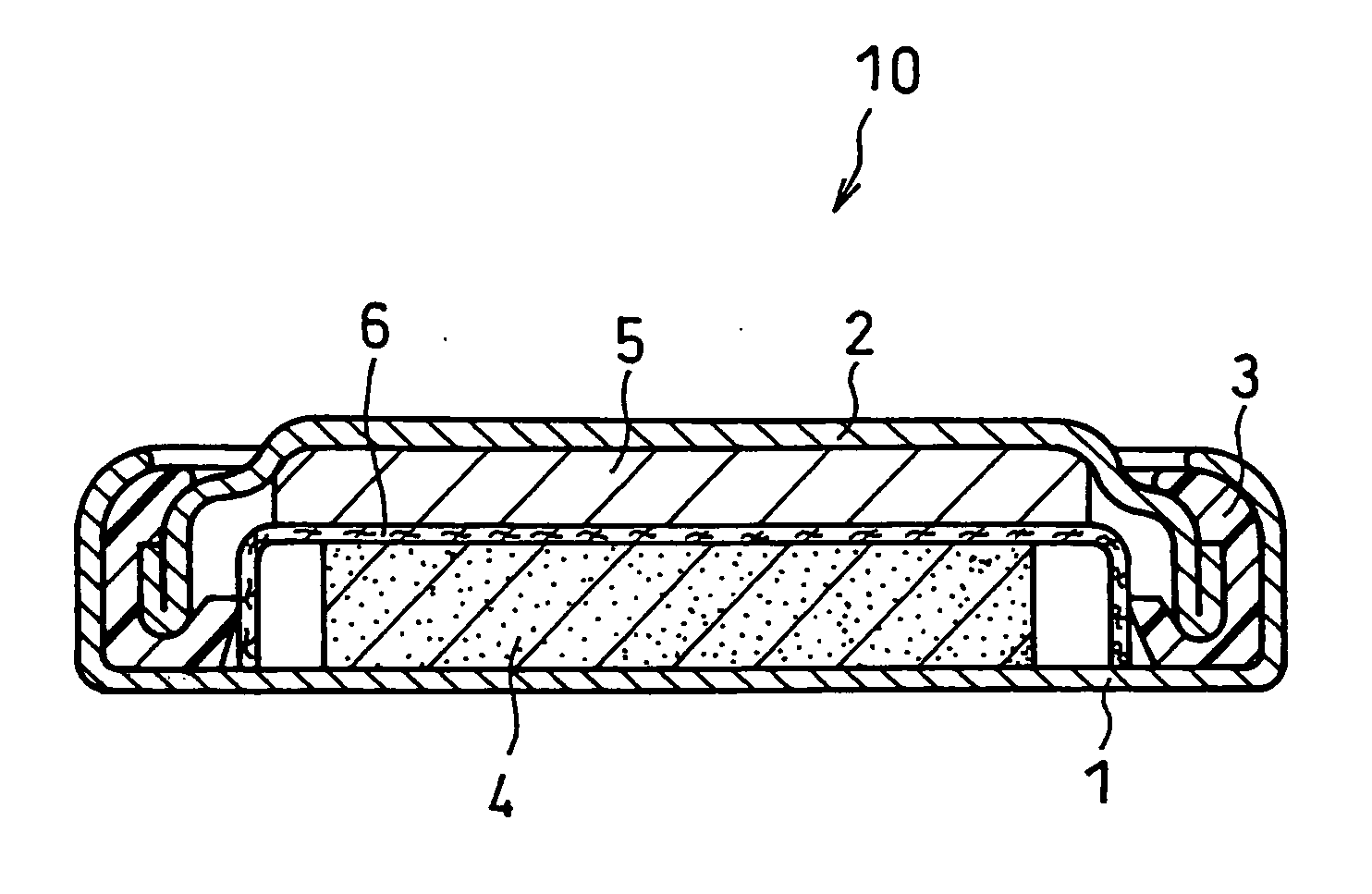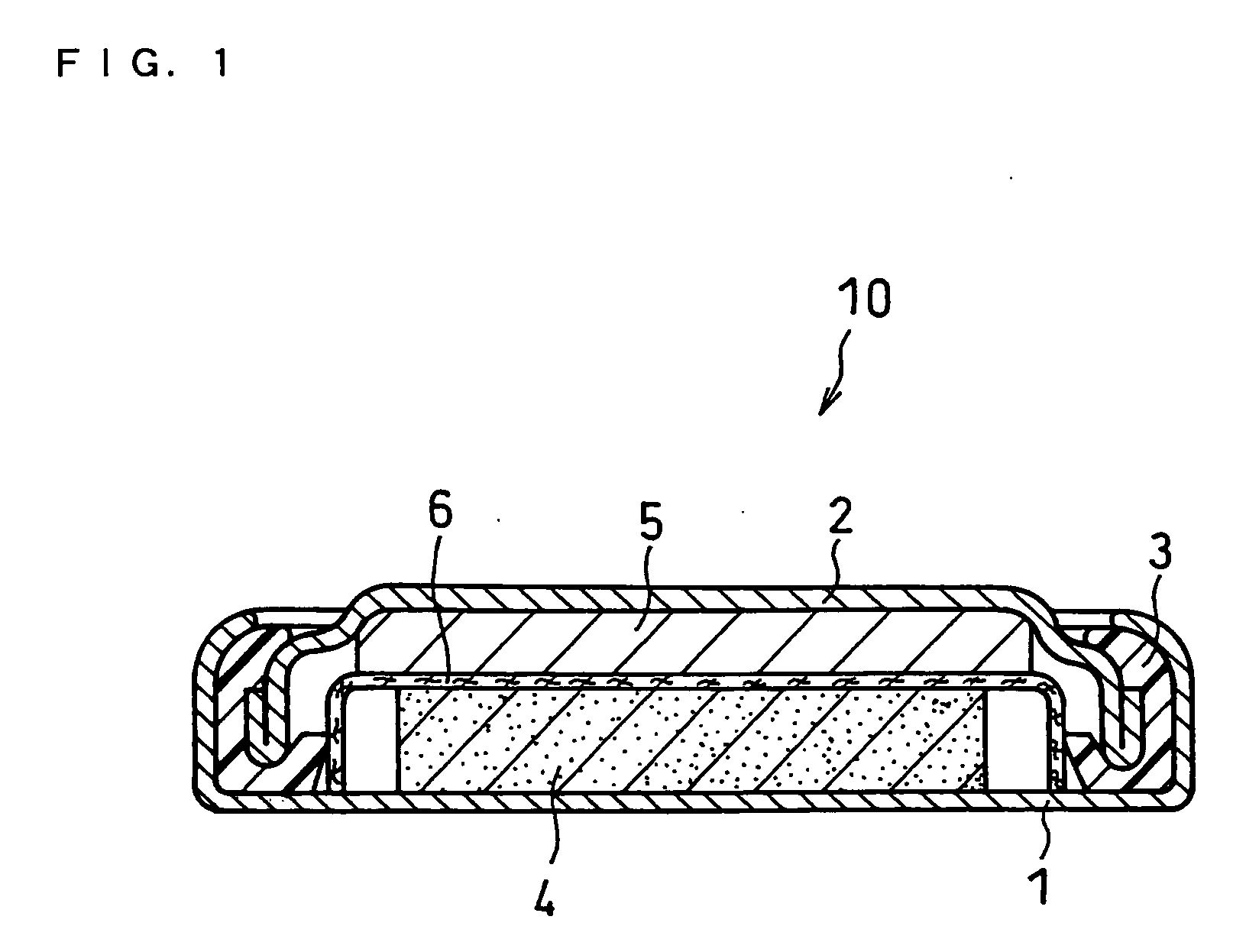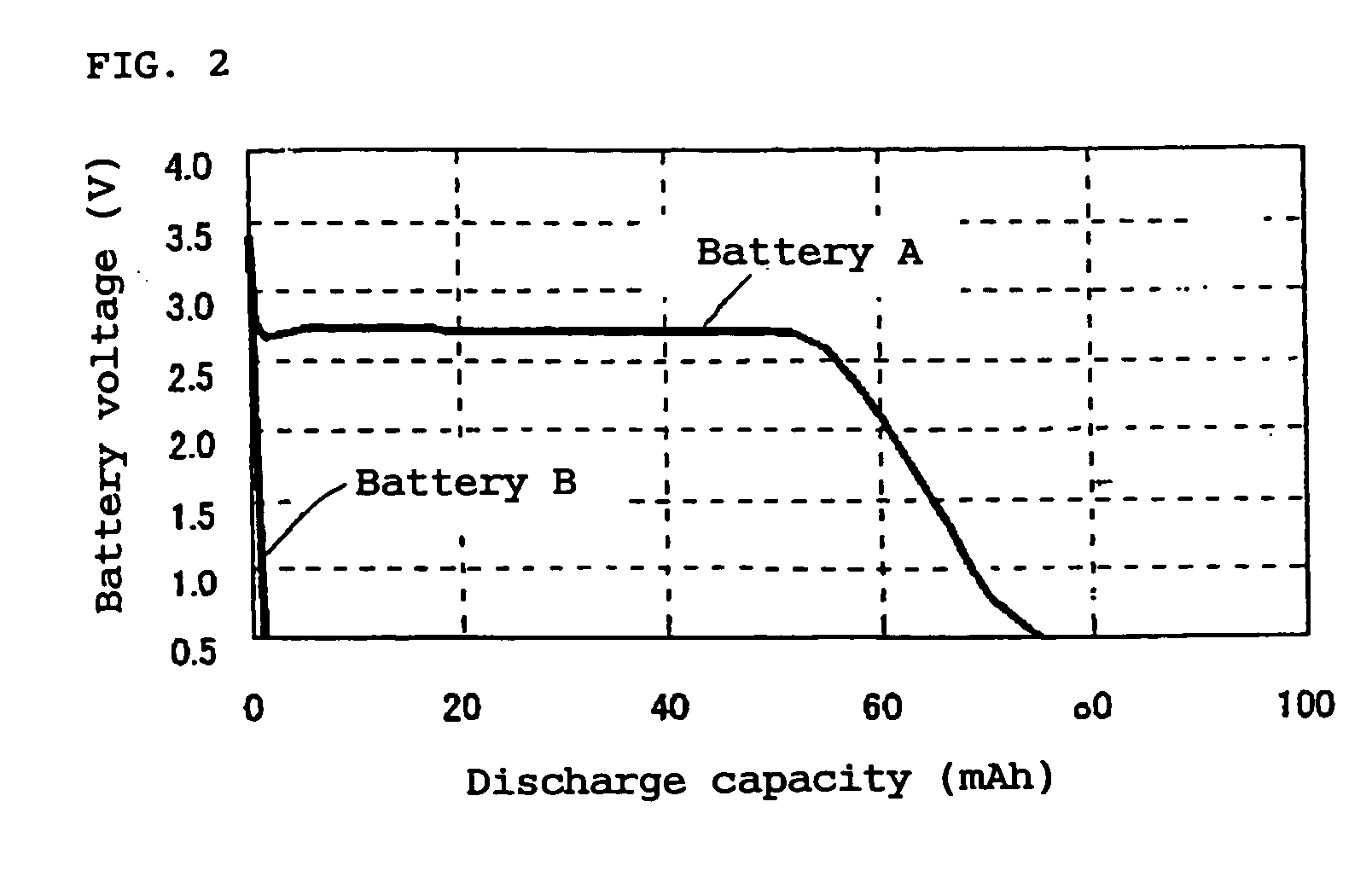Non-aqueous electrolyte primary battery
a technology of electrolyte and primary battery, which is applied in the direction of non-aqueous electrolyte cells, cell components, cell component details, etc., can solve the problems of inhibiting the increase of battery capacity, and achieve the effect of reducing the thickness of separators, improving the efficiency of impregnating operation, and reducing the volume occupied by separators in batteries
- Summary
- Abstract
- Description
- Claims
- Application Information
AI Technical Summary
Benefits of technology
Problems solved by technology
Method used
Image
Examples
example 1
(i) Production of Positive Electrode
[0034] A fluorinated carbon was obtained by fluorinating needle coke. The fluorinated carbon, acetylene black serving as a conductive auxiliary agent and polytetrafluoroethylene (PTFE) serving as a binder were mixed at a weight ratio of 80:10:10 to prepare a positive electrode material mixture paste. PTFE was used in the form of an aqueous dispersion.
[0035] The obtained positive electrode material mixture paste was applied onto an expended metal made of stainless steel (SUS 444). Thereafter, the expanded metal carrying the positive electrode material mixture was rolled to have a thickness of 0.35 mm, obtaining a positive electrode plate. Then, the positive electrode plate was punched into a disc having a diameter of 15 mm, thereby obtaining a positive electrode. The obtained positive electrode was dried at 120° C. for 8 hours.
(ii) Production of Negative Electrode
[0036] A lithium metal foil having a thickness of 0.2 mm was punched into a disc...
example 2
(i) Production of Positive Electrode
[0044] A positive electrode plate having a thickness of 0.35 mm was produced in the same manner as Example 1, and the positive electrode plate was cut into a band having a width of 23 mm and a length of 190 mm, thus obtaining a positive electrode. A positive electrode current collecting lead made of SUS 444 was welded to the positive electrode. The obtained positive electrode was dried at 120° C. for 8 hours.
(ii) Production of Negative Electrode
[0045] A lithium metal foil having a thickness of 0.2 mm was cut into a band having a width of 21 mm and a length of 210 mm, thus obtaining a negative electrode. A negative electrode current collecting lead made of nickel was bonded to the negative electrode.
(iii) Preparation of Non-aqueous Electrolyte
[0046] LiBF4 serving as a solute was dissolved at a concentration of 1 mol / L in γ-butyrolactone serving as a solvent to give a non-aqueous electrolyte.
(iv) Preparation of Separator
[0047] An aqueous ...
PUM
| Property | Measurement | Unit |
|---|---|---|
| temperature | aaaaa | aaaaa |
| temperature | aaaaa | aaaaa |
| thickness | aaaaa | aaaaa |
Abstract
Description
Claims
Application Information
 Login to View More
Login to View More - R&D
- Intellectual Property
- Life Sciences
- Materials
- Tech Scout
- Unparalleled Data Quality
- Higher Quality Content
- 60% Fewer Hallucinations
Browse by: Latest US Patents, China's latest patents, Technical Efficacy Thesaurus, Application Domain, Technology Topic, Popular Technical Reports.
© 2025 PatSnap. All rights reserved.Legal|Privacy policy|Modern Slavery Act Transparency Statement|Sitemap|About US| Contact US: help@patsnap.com



